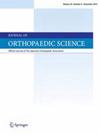Mo-fi-disc 评分系统:了解放射学工具,以便在人工智能时代更好地划分疾病过程并改进我们的腰背痛解决方案。
IF 1.5
4区 医学
Q3 ORTHOPEDICS
引用次数: 0
摘要
“mo -fi-disc”是一种量化腰椎退变并预测腰痛(LBP)强度的新型评分系统。然而,其与lbp相关残疾的关系尚不清楚。在本研究中,我们旨在分析“Mo-fi-disc”评分系统在脊柱医学迈向人工智能(AI)时代的背景下,是否能够预测下腰痛相关残疾,区分有无症状的下腰痛患者。方法对前瞻性收集的数据库进行横断面分析。我们纳入了年龄、性别和bmi匹配的132例受试者(患者66例,无症状者66例)。采用腰椎磁共振成像“Mo-fi-disc”评分系统评估Modic改变(Mo)、棘旁肌脂肪浸润(fi)和椎间盘退变(disc)。分别用视觉模拟评分法(VAS)和Oswestry残疾指数(ODI)评价疼痛和残疾。结果Mo-fi-disc评分5.5是最合适的临界值。Mo-fi-disc评分系统区分腰痛患者与无症状患者的OR为1.79。VAS和ODI每增加1分预测较高Mo-fi-disc评分的or分别为1.82和1.13。结论“mo -fi-disc”评分系统是描述腰痛强度和腰痛相关残疾的有效工具。Mo-fi-disc评分临界值为5.5,用于区分腰痛患者与无症状患者。这个评分系统,随着其缺陷的逐步改进,可以帮助临床医生在不久的将来在基于人工智能的脊柱医学中选择合适的患者进行保守和手术治疗。IRB批准noATADEK 2019-12/4。本文章由计算机程序翻译,如有差异,请以英文原文为准。
Mo-fi-disc scoring system: Towards understanding the radiological tools to better delineate the disease process and enhancing our solutions for low back pain in artificial intelligence era
Background
‘Mo-fi-disc’ is a new scoring system that quantifies degeneration of the lumbar spine and predicts the intensity of low back pain (LBP). However, its association with LBP-related disability is unknown. In the present study, we aimed to analyze whether ‘Mo-fi-disc’ scoring system could predict LBP-related disability and distinguish patients with LBP from asymptomatic subjects, while the spine medicine marching towards the era of artificial intelligence (AI).
Methods
This is a cross-sectional analysis of a prospectively collected database. We included age-, gender-, and BMI-matched 132 subjects (patients: 66, asymptomatic subjects: 66). Modic changes (Mo), fatty infiltration in the paraspinal muscles (fi), and intervertebral disc degeneration (disc) were evaluated using ‘Mo-fi-disc’ scoring system on lumbar spine magnetic resonance imaging. Pain and disability were evaluated with visual analogue scale (VAS) and Oswestry disability index (ODI), respectively.
Results
A Mo-fi-disc score of 5.5 was the most appropriate cut-off value. Mo-fi-disc scoring system had an OR of 1.79 in distinguishing patients with LBP from asymptomatic subjects. One point increment in VAS and ODI had ORs of 1.82 and 1.13 for predicting higher Mo-fi-disc scores.
Conclusion
‘Mo-fi-disc’ scoring system is a useful tool depicting intensity of LBP and LBP-related disability. The cut off value of Mo-fi-disc score is 5.5 to distinguish patients with LBP from asymptomatic subjects. This scoring system, with progressive improvement of its faults, could help clinicians to select appropriate patients for conservative and surgical management in the very near future, in AI-based spine medicine.
IRB approval no
ATADEK 2019-12/4.
求助全文
通过发布文献求助,成功后即可免费获取论文全文。
去求助
来源期刊

Journal of Orthopaedic Science
医学-整形外科
CiteScore
3.00
自引率
0.00%
发文量
290
审稿时长
90 days
期刊介绍:
The Journal of Orthopaedic Science is the official peer-reviewed journal of the Japanese Orthopaedic Association. The journal publishes the latest researches and topical debates in all fields of clinical and experimental orthopaedics, including musculoskeletal medicine, sports medicine, locomotive syndrome, trauma, paediatrics, oncology and biomaterials, as well as basic researches.
 求助内容:
求助内容: 应助结果提醒方式:
应助结果提醒方式:


